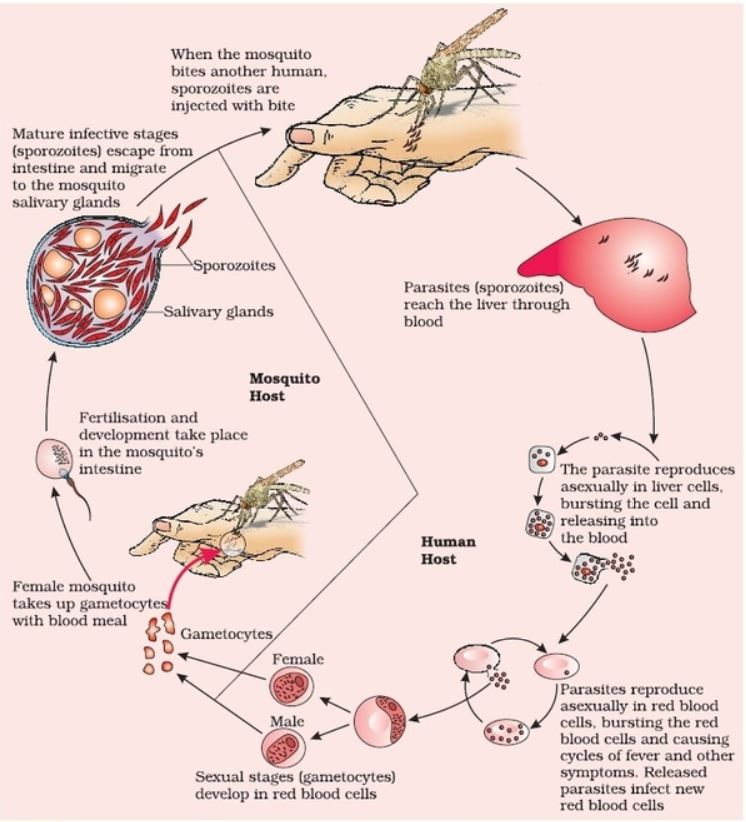.jpg)
News
Recently, the World Health Organization (WHO) has released the report titled “Zeroing in on Malaria Elimination”, prior to World Malaria Day (25th April).
- It brings out progress made through the E-2025 initiative of WHO, which has identified 25 countries with the potential to eradicate Malaria by 2025.
E-2025 Initiative
- Earlier, WHO launched the E-2020 Initiative in 2017.
- It aimed to support a group of countries in achieving zero indigenous cases of Malaria by 2020.In
- Around twenty-one countries were identified for having the potential to meet the set target.
- On similar lines, WHO has identified a new group of 25 countries that have the potential to eliminate Malaria within a timeline of five years (by 2025).
- These countries will be responding to the dual threat of Malaria and the Covid-19 diseases.
- The WHO and its partners will provide specialised support and technical guidance to them to enable them to achieve the target.
- Countries are expected to participate in elimination forums, conduct surveillance assessments, audit their elimination programmes annually and share malaria case data periodically.
- Selection Criterias for New Country
- Establishment of a government-endorsed elimination plan.
- Meeting the threshold of Malaria case reductions in recent years.
- Having the capacity of Malaria surveillance and a designated governmental agency responsible for Malaria elimination.
- Being selected by the WHO Malaria Elimination Oversight Committee.
- Global Status
- Around 39 countries were Malaria-free in February 2021, according to the WHO.
- Of 87 countries with Malaria, 46 reported less than 10,000 malaria cases in 2019, in comparison to 26 countries in 2000.
- By the end of 2020, 24 countries had reported interrupting malaria transmission for three years or more. Of these, 11 were certified Malaria-free by WHO.
- Indian Scenario
- The World Malaria Report (WMR) 2020 released by WHO indicated that India has made considerable progress in reducing its malaria burden.
- India is the only high endemic country which has reported a decline of 17.6 per cent in 2019 as compared to 2018.
- Initiatives Taken by India
- Indian Council of Medical Research (ICMR) established Malaria Elimination Research Alliance (MERA) India which is a conglomeration of partners working on Malaria control.
- India is also among the 18 Global leaders who endorsed the Malaria Elimination roadmap of Asia Pacific Leaders Malaria Alliance at the East Asia Summit held in Malaysia in 2015.
- It was then that the alliance leadership set the goal of ensuring that the Region becomes free of malaria by 2030.
- In 2017, India launched its 5-year National Strategic Plan for Malaria Elimination (2017-2022) that shifted focus from Malaria control to elimination and provided a roadmap to end malaria in 571 districts out of India’s 678 districts by 2022.
- India has been able to achieve remarkable success in reducing the malaria burden in terms of cases by 84.5 per cent and deaths by 83.6 per cent which has been well recognized by WMRs of 2018, 2019 and 2020.
Malaria
- Cause: It is a life threatening disease caused by plasmodium parasites.
- Transmission: The parasites spread through the bites of infected female Anopheles mosquitoes.
- In the human body, parasites initially multiply in liver cells and then attack the Red Blood Cells (RBCs).
- There are 5 parasite species that cause Malaria in humans and 2 of these species (Plasmodium falciparum and Plasmodium vivax) pose the greatest threat.

Image Courtesy: Embibe
- Distribution: It is predominantly found in the tropical and subtropical areas of Africa, South America and Asia.
- Symptoms: Fever and flu-like illness, including chills, headache, muscle ache and fatigue.
- Prevention and Cure
- It is preventable as well as curable.
- Vector control is the main way to prevent and reduce malaria transmission.
- Antimalarial medicines are used to prevent malaria e.g. Chemoprophylaxis, Artemisinin-based Combination Therapy (ACT).
- Vaccine
- RTS,S (branded as Mosquirix) is safe and reduces the risk of malaria by nearly 40%.
- It trains the immune system to attack the malaria parasite (Plasmodium falciparum, the most deadly species of the malaria parasite).
- It is the first and only vaccine to show partial protection in young children.
- RTS,S (branded as Mosquirix) is safe and reduces the risk of malaria by nearly 40%.
World Malaria Day
|
Source: DTE
Previous article
Project DANTAK
Next article
RBI Extends WMA Scheme